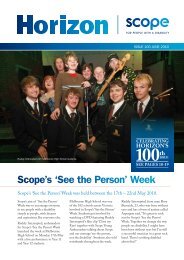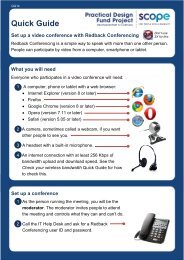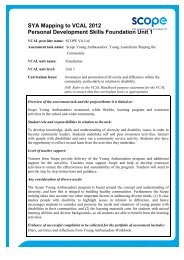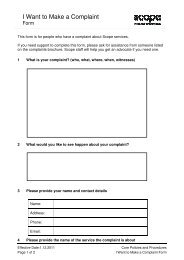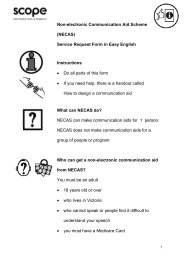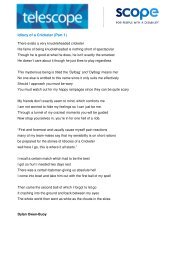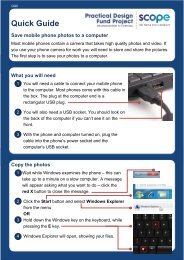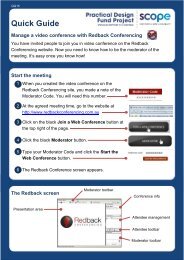Positive behaviour support Getting it right from the start
Positive behaviour support Getting it right from the start
Positive behaviour support Getting it right from the start
Create successful ePaper yourself
Turn your PDF publications into a flip-book with our unique Google optimized e-Paper software.
<strong>Pos<strong>it</strong>ive</strong> <strong>behaviour</strong> <strong>support</strong>: <strong>Getting</strong> <strong>it</strong> <strong>right</strong> <strong>from</strong> <strong>the</strong> <strong>start</strong> - Facil<strong>it</strong>ators reference manual 97<br />
Appendix 2: Workplace tasks to be completed by Day 3<br />
of <strong>Pos<strong>it</strong>ive</strong> Behaviour Support Training program<br />
Date of day 3:<br />
Names of participants:<br />
Please note: These completed tasks could be used in add<strong>it</strong>ion to notes <strong>from</strong> your learners<br />
manual as evidence of competency for <strong>the</strong> un<strong>it</strong> ent<strong>it</strong>led Plan and provide advanced <strong>behaviour</strong><br />
<strong>support</strong> (National Code: CHCICS404A). This may assist you in obtaining recogn<strong>it</strong>ion of current<br />
competency <strong>from</strong> a registered training organisation delivering Certificate IV in Disabil<strong>it</strong>y and / or<br />
<strong>the</strong> Advanced Diploma of Disabil<strong>it</strong>y.<br />
Tasks to be completed as a staff team by beginning of day 3 of this program<br />
Objective: Complete a functional <strong>behaviour</strong> assessment (Steps 1 to 4) using information in your<br />
learner’s manual <strong>from</strong> Day 2.<br />
Instructions<br />
1. Complete Team Action Plan in table below before you leave day 2 of training<br />
2. List clearly at least two <strong>behaviour</strong>s of concern for your focus person (Step 1 of functional<br />
<strong>behaviour</strong> assessment)<br />
3. Undertake MAS assessment in relation to two of <strong>the</strong> <strong>behaviour</strong>s. Assessment form will be<br />
distributed by trainer. (Step 2 of functional <strong>behaviour</strong> assessment)<br />
4. Complete STAR charts for at least one of <strong>the</strong> <strong>behaviour</strong>s for <strong>the</strong> period of one week (Step 2 of<br />
functional <strong>behaviour</strong> assessment)<br />
5. Develop a hypo<strong>the</strong>sis about why <strong>the</strong> <strong>behaviour</strong> is occurring (Step 3 of functional <strong>behaviour</strong><br />
assessment)<br />
6. Test your hypo<strong>the</strong>sis by developing and trialling at least one environmental and one skill<br />
development strategy (Beginning of Step 4 of functional <strong>behaviour</strong> assessment). Identify <strong>the</strong><br />
strategies chosen and provide a brief description on how <strong>the</strong>se strategies were implemented<br />
and <strong>the</strong> outcome.



